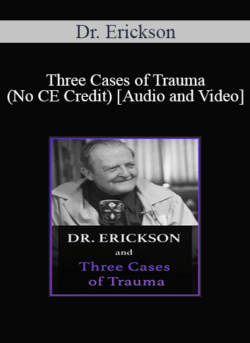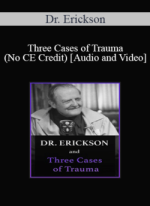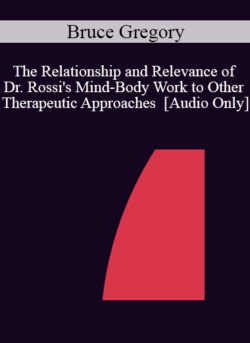[Instant Download] – Immediately deliver the download link after receiving the paymentPurchase Milton H. Erickson & Jeffrey Zeig – Dr. Erickson and Three Cases of Trauma (No CE Credit) courses at here with PRICE $19.95 $5Topic Areas:TraumaCategory:Lounsbury Winston Donation | Erickson Materials | Milton H. Erickson Collections | Erickson Streaming Video CollectionFaculty:Milton H. Erickson MD, MD | Jeffrey Zeig, PhDCourse Levels:Master Degree or Higher in Health-Related FieldDuration:1 Hour 13 MinutesFormat:Audio and VideoOriginal Program Date :Dec 31, 1972:From the Lounsbury-Winston CollectionFor this one-hour video, we reached backed into the Erickson archives, circa 1973 to 1978, to Milton Erickson’s teaching seminars. Erickson conducted these teaching seminars in the comfort and intimacy of his own home. In this video, we encounter three cases – each dealing primarily with trauma. And in each of these cases, there is hidden meaning. Erickson demonstrates how to take “extraneous” information provided by the client, understand the context relevant to the client’s problem, and insightfully extrapolate the true meaning for therapeutic effect. This video contains a featurette from Dr. Jeffrey Zeig introducing the cases, and breaking down the techniques Erickson uses.There are three lessons that you can extrapolate from these cases, which can be immediately applied to your own practice:Storytelling. Erickson was a great storyteller, and he often told stories for the client to have a realization. He worked experientially. And when he was doing hypnosis, the stories became suggestions.Working in a series of steps. Erickson worked incrementally. If there is hard work to be done, it is best accomplished by working incrementally in small steps. Think “baby steps.” Even when Erickson was working with repression, he never pushed the client down to relive the trauma. Rather, he would break things up into behavioral, affective, and cognitive components — and deal with them individually. All problems are an amalgamation of these components, so addressing the components individually will promote the best outcome.Follow the clues. In Erickson’s world, there was no extraneous information. Anything could be used to advance the therapy. He would notice the smallest detail — a certain posture, an inflection in a client’s voice – verbal and nonverbal behavior as clues to solving the riddle, solving the client’s problem.
Milton H. Erickson & Jeffrey Zeig – Dr. Erickson and Three Cases of Trauma (No CE Credit)
₹830.00







